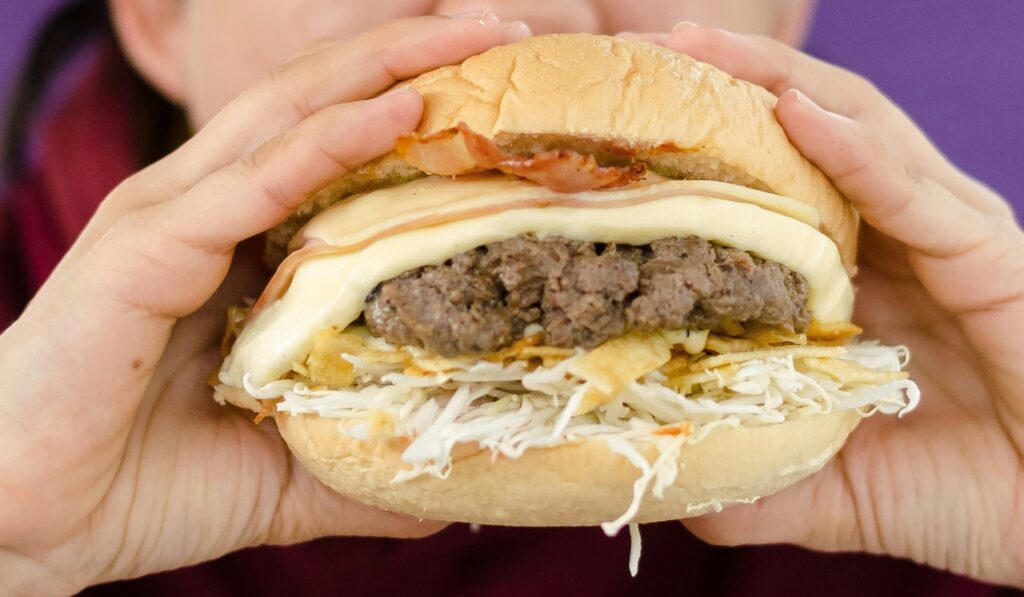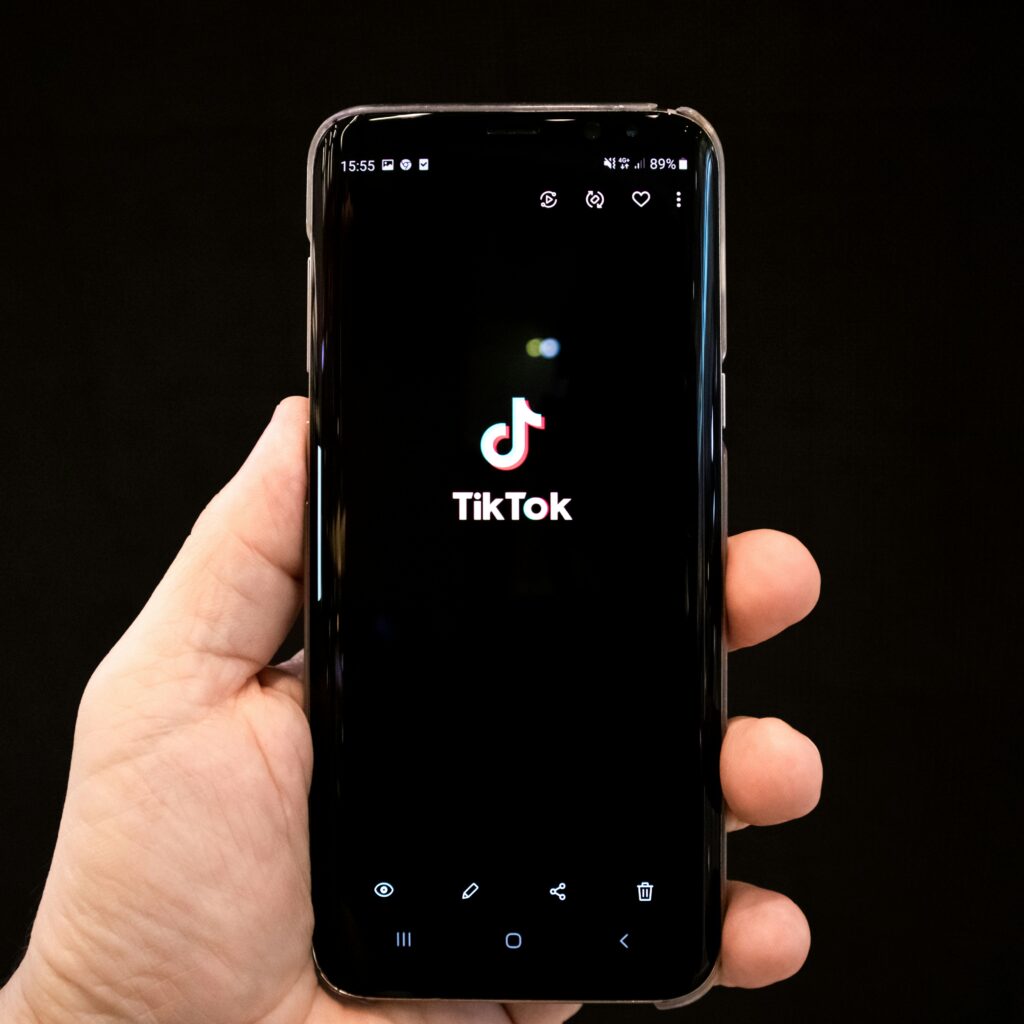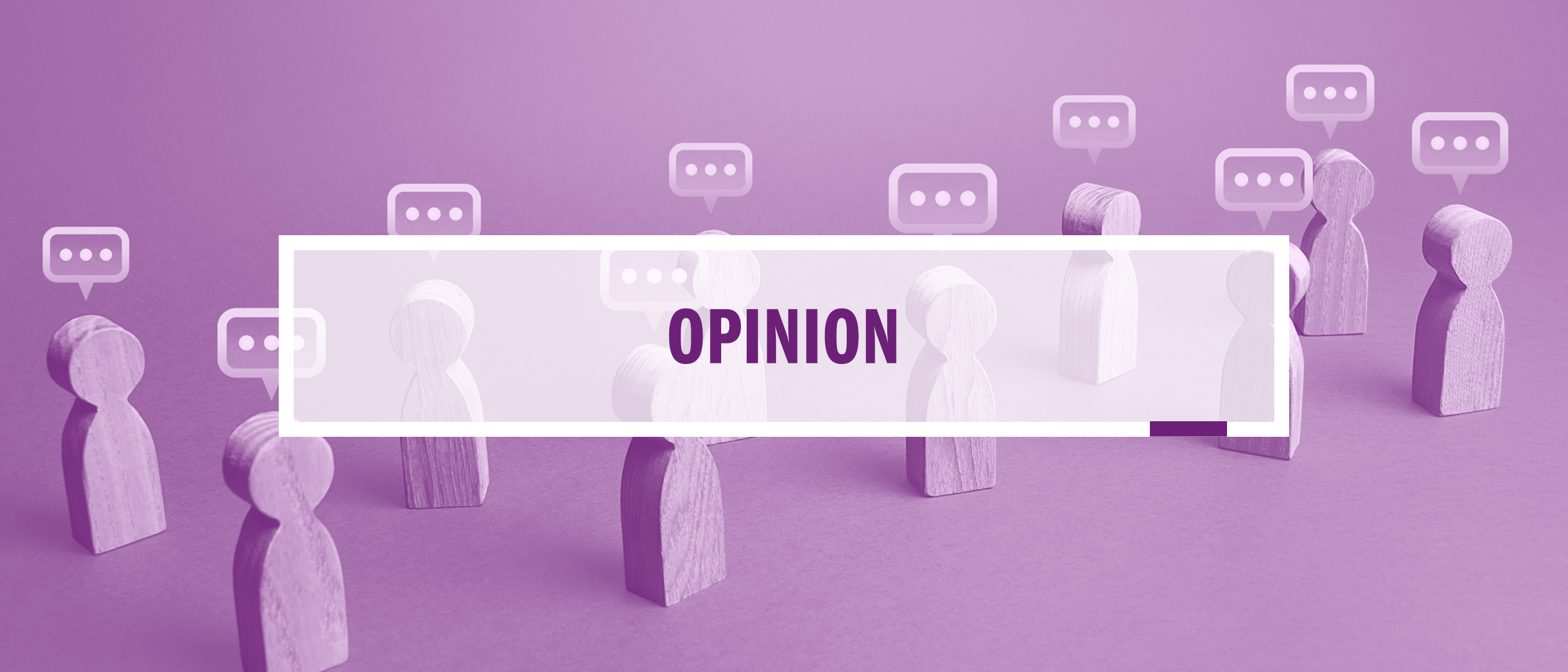New from the @EmoryCSHH News Team:
Alexa Morales recommends Cassandra Quave's memoir "The Plant Hunter: A Scientist's Quest for Nature's Next Medicines" for its vivid imagery and musings on the medicinal properties of plants.
Social Media’s Binge Eating Trend Must End
Viral ‘mukbang’ videos can exacerbate mental health conditions, such as eating disorders, in young viewers.
By Stephanie Oehler
This summer, the For You page of millions of TikTok viewers was saturated with videos from the creator known as “Jelly Bean Sweets.” The videos, which amassed hundreds of millions of views, featured a 20-year-old college student messily eating copious amounts of fast food in minutes. Comments on her social media accounts were flooded with viewers expressing concern for her eating habits, shaming her for gaining weight, and accusing her of prioritizing views and financial gain over her health. Her popularity inspired young viewers to create their own TikToks copying her eating habits.
Jelly Bean Sweets is not the only creator of this type of content. Social media platforms have seen a surge in ‘mukbang’ style videos in the last 10 to 15 years. The term ‘mukbang,’ originating from South Korea, translates to “eating shows.” These videos typically feature content creators chit-chatting with the audience and eating large quantities of food on camera. Mukbang videos have shifted focus from community-building towards extreme consumption of food as they have gained popularity in Western countries. Studies show that viewers are drawn to these videos for escapism from real life and the entertaining shock factor.
The recent popularity of mukbang videos, combined with high amounts of screen time among adolescents, raises concerns about how this content may influence the physical and mental health of young viewers. Mukbangs expose young and impressionable viewers to unrealistic eating patterns, which can exacerbate existing mental health, chronic illness, and disordered eating conditions. The dangers of these videos have been largely ignored by social media influencers and platforms that currently prioritize viewer engagement over well-being. Content creators and social media companies should stop promoting this type of content to protect younger viewers.

The collision of obesity and screen time
The last 20 years have been marked by unprecedented challenges for young people. Children ages 8 to12 in the United States spend 4 to 6 hours a day watching or using screens, while teenagers spend up to 9 hours, according to the American Academy of Child & Adolescent Psychiatry. Young people who spend more than 3 hours a day on social media run double the risk of experiencing mental health problems such as depression and anxiety, according to the U.S. Department of Health and Human Services. The prevalence of anxiety, depression, and eating disorders in the youth population has risen over the past decade along with the increase in social media usage.
Childhood obesity is also on the rise. The CDC reports that 22.2 percent of adolescents between the ages of 12 and 19 years old are classified as obese. This number has been steadily increasing since 2005.
The type of online content that viewers are consuming, combined with increased screen time, may play a significant role in the increased prevalence of physical and mental health conditions. Social media influencers and platforms promote healthier behaviors for impressionable youth. The promotion of unrealistic eating patterns showcased in mukbang videos must end.
Mukbang videos add to the broader effects of excessive screen time, including increased isolation, which exacerbates the growing youth mental health crisis.
The combination of increased screen time and mental health conditions among adolescents has complicated the work of pediatric physicians, many of whom received limited training in mental health interventions during their medical education. “The amount of mental health conditions that we see these days, and the difficulty of our patients, it’s astronomical,” said Dr. Mary Burton, a board-certified pediatrician at Intermountain Healthcare in Salt Lake City, Utah. “Most of these kids have phones at such an early age,” she added.

Substituting faux communities for real ones
Adolescents may specifically be drawn to mukbang content due to its community-oriented nature. Mukbang creators typically address the audience as if they were close friends, creating a parasocial relationship that provides a momentary sense of connection. However, this connection is inherently one-sided.
This false sense of community can be confusing to young viewers and lead to loneliness and detachment from real-world connections, which can weaken relationships with family and friends.
Perceived loneliness and social isolation is linked with depression, poor sleep quality, and impaired executive function, according to the American Psychological Association. Increased isolation caused by mukbang content contributes to the growing mental health crisis by putting young people at a greater risk of developing a mental health disorder.
The harmful impact of mukbangs also contributes to the development and exacerbation of restrictive and binge eating disorders.
“Mukbang videos do not model a normal way of eating,” said Hannah Posluszny, a Registered Dietitian and PhD student in Nutrition and Health Sciences at Emory University. Many adolescents already have low satisfaction with their bodies. Watching mukbang content can distort their relationship with food and fuel disordered eating behaviors, she added.
Recent studies have highlighted a link between mukbang viewing and emotional and physical harm in viewers. A study published in the BMC Journal of Health, Population, and Nutrition journal in May 2024 found an association between increased frequency of mukbang watching with poorer eating habits and body image perception [1].
Another study, published in February 2023 in the International Journal of Eating Disorders journal, found that problematic mukbang viewing was associated with binge eating and purging [2].
Mukbang videos are especially harmful to adolescents with preexisting eating disorders.
“I’ve found that people who have restrictive eating disorders tend to watch mukbang more than people who have a binge eating disorder,” said Posluszny. Watching mukbang videos acts as a survival instinct for people with restrictive eating disorders. They compensate for their lack of eating by watching others consume food, she added.

Mukbang content exacerbates the worsening obesity epidemic in the adolescent population.
Frequent viewing of mukbang content may encourage viewers to model binge eating behaviors, resulting in an increased risk of obesity. A BMC Nutrition Journal study published in April 2024 found that adolescent boys in South Korea who watched mukbang were more likely to be obese than boys who never watched mukbang [3].
“Patients with binge eating disorder may watch mukbangs to make themselves feel better,” said Posluszny. “They see that they’re not alone in eating so much in short periods.”
This validation, however, continues the vicious cycle of binging and discourages individuals from seeking recovery.
The compounding effects of screen time
The harmful influence of mukbang on the eating habits of adolescents is compounded by decreased amounts of sleep and physical activity. Mukbang videos are designed to keep viewers engaged for extended periods of time. Passive consumption of mukbang content can disrupt sleep patterns and contribute to a sedentary lifestyle.
“The average high school kid is supposed to get eight to nine hours of sleep at night, and they’re on their phones six or seven hours a day,” Burton said. “And a lot of these kids have no outside activities. They don’t exercise. The obesity that I see is staggering.”
Some may classify mukbangs as harmless content made and watched solely for entertainment. However, these extreme videos can have tragic consequences for creators in addition to viewers. The Daily Mail reported the death of Pan Xiaoting, a 24-year-old “extreme eater” who died in July of a suspected stomach tear after a ten-hour Mukbang live stream where she consumed 22 pounds of food.
Others may suggest the responsibility of monitoring content for adolescents falls on parents rather than social media influencers or companies. However, the number of hours that adolescents spend online make parental monitoring extremely difficult. Additionally, children have varying levels of parental involvement in their lives.
“Most parents have trouble monitoring what content their kids are watching,” Burton said.
Parents can play a role in limiting overall adolescent screen time; however, the addictive nature of social media algorithms make it unrealistic for the burden to be placed entirely on families.
“These videos showcase extreme behaviors that aren’t normal or healthy,” Posluszny said. “Mukbang videos should be filtered [out of social media algorithms] along with other harmful eating disorder-related content.”
Social media companies must take a more active role in monitoring and filtering out harmful content. Content creators should be mindful of the age demographic of their audience and avoid posting content that can be harmful to viewers’ physical or mental health.
The presence of mukbang videos on social media poses harm to pre-teens and teens. These videos promote excessive consumption of food as a form of entertainment and promote disordered eating. The youth population is facing significant challenges due to excessive screen time, mental health disorders, and limited physical activity. The influence of mukbang content exacerbates these already existing issues.
It’s time to end the normalization of binge eating on social media and encourage content that promotes healthier and more balanced lifestyles for young people.


